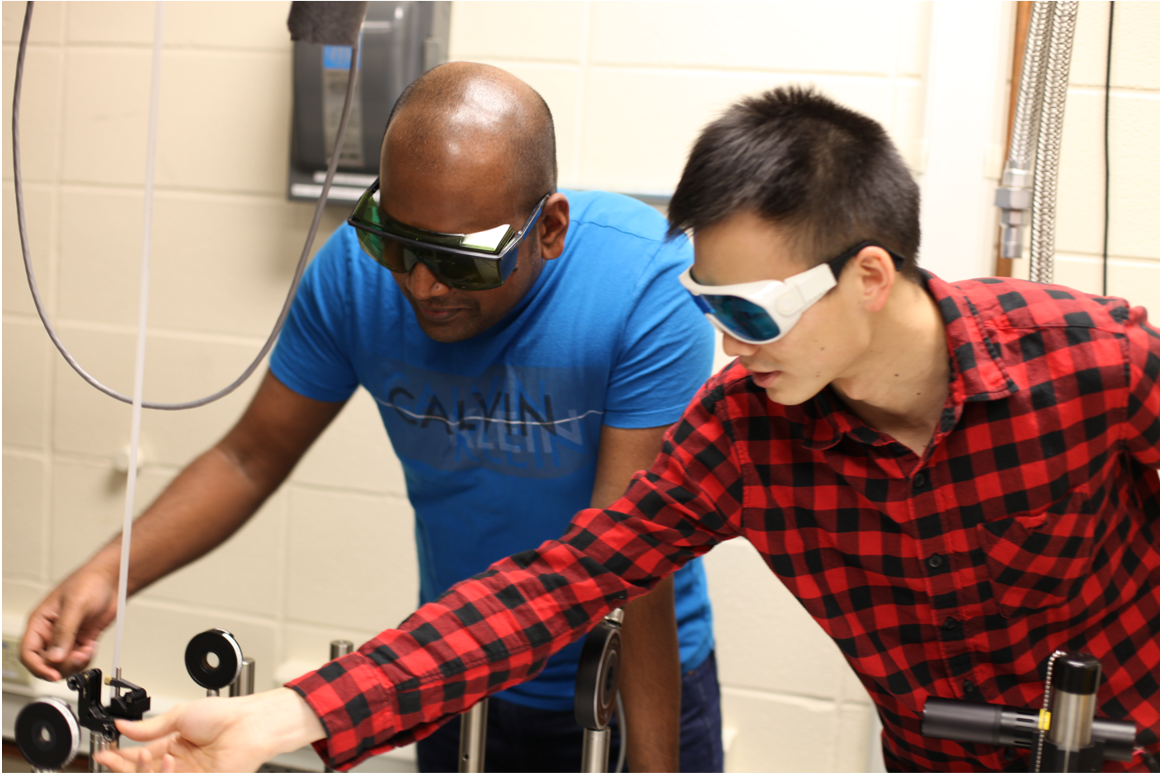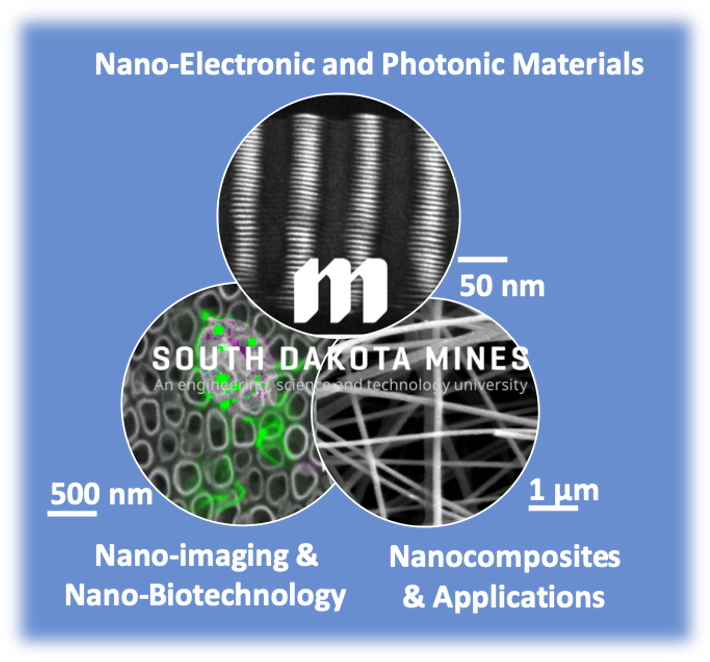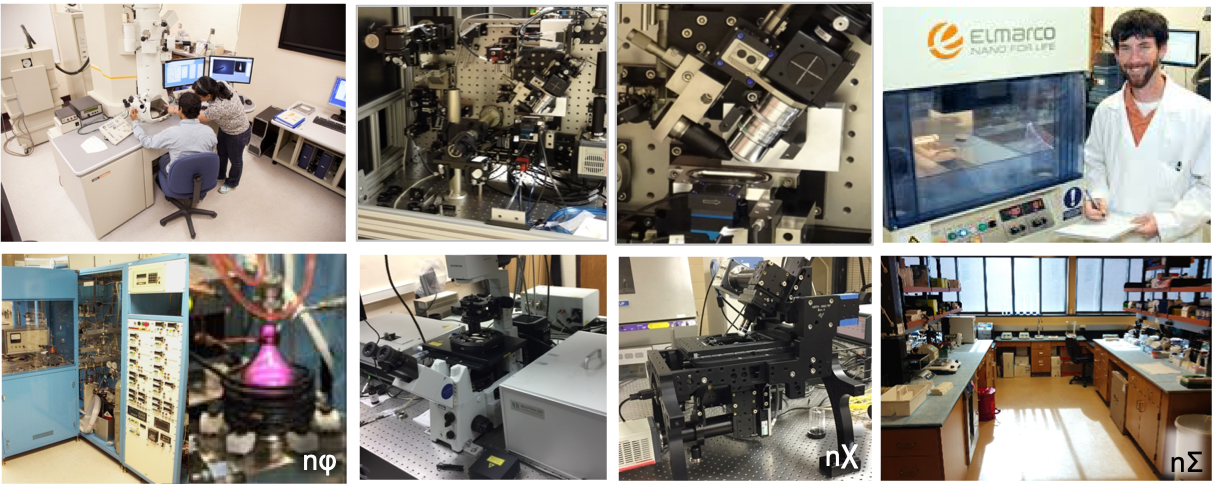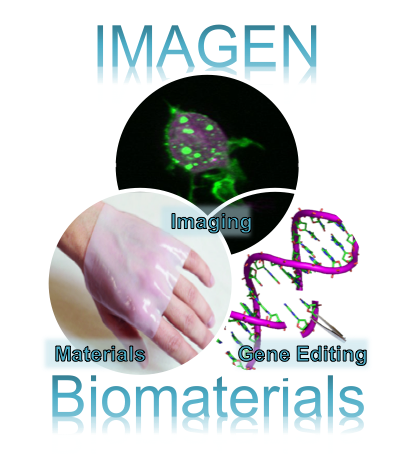

Nano SEResearch
Examples of active research areas in the Nano SE PhD program are: synthesis and characterization of electronic and photonic materials, including next generation solar cells and nanophotonic / plasmonic nanostructures and materials, nano-biotechnology, including nano-biomechanics, live cell imaging methods and nano-mechanobiology, and nanocomposite materials and their applications, associated with the Center for Nanocomposites and Advanced Manufacturing (CNAM), including microbial synthesis of biopolymeric materials, high resolution electron microscopy, and nano-scale spectroscopy utilizing the near-fields of ultrafast lasers.
The program has ties with the School of Mines' Composities and Polymer Engineering Laboratory (CAPE), a nanotechnology center with a focus on development of advanced nanocomposite materials, as well as ties to the State of South Dakota NSF-EPSCoR research cluster based on imaging and informatics approaches to understanding biochemical regulatory networks, BioSystems Networks / Translational Research (BioSNTR).
A partial list of current and past funded research programs and email links to the faculty involved is reproduced below.
Partial List of Funded Research Projects
- Ultra-robust plasmonic biochips for detection of bone turnover markers in astronaut's urine (NASA, Wang).
- Non-Equilibrium Synthesis of Semiconductor Alloys for Energy Applications (DOE, Ahrenkiel).
- MRI: Development of a Scalable High Performance Computing System in Support of the Lattice Light-sheet Microscope (NSF, Anderson).
- Biochemical Spatiotemporal NeTwork Resource (BioSNTR) (NSF/SDBOR, Smith).
- Imaging Cellulose - Carbohydrate Binding Module Interactions with Nanometer Resolution Using Single Molecule Methods (NSF, Smith).
- Center for Nanocomposites and Advanced Manufacturing (CNAM-Bio) (SDBOR, Salem).
- Development of an Advanced Photovoltaic Materials Research Cluster in South Dakota (NASA, Smith, Ahrenkiel).
- Nanoscale Ultrafast Spectroscopy of Nano- and Energy- Materials (State of South Dakota, Smith).
- Combinatorial Research for Glass Coatings (Gaurdian Glass Corp., Ahrenkiel).
NANOUnder the Hood
Facilities and resources supporting research in focus areas includes the laboratories and facilities listed below, in addition to campus wide research facilities.
 | |||
|
IMAGEN
Biomaterials

An emerging concept within the Nano SE program and BioSNTR is the integration of Imaging, Materials and Genetic Engineering focused on developing improved biomaterials. This developing paradigm uses high resolution imaging, cell biology and materials engineering in concert to accellerate the development of next generation biomaterials. Check back later for more details as this effort develops ...